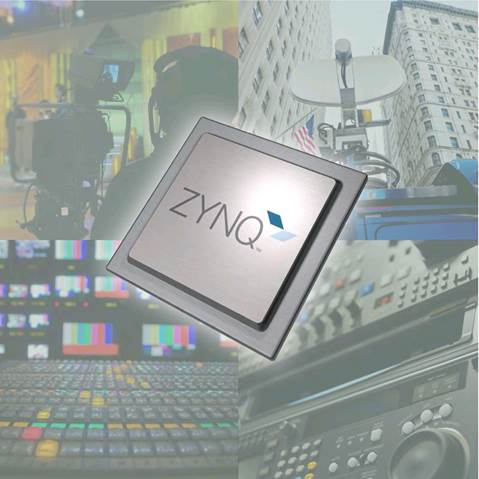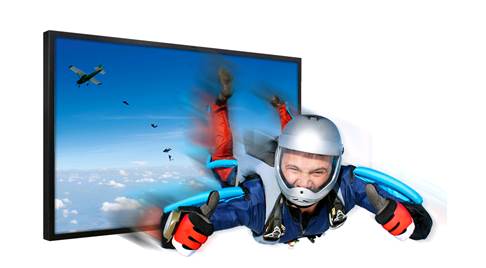Eco angles - power, heat, greenness
Users want to use their mobile devices for
longer hours on a single charge. So it is critical that these devices consume
less power. For larger displays, it is a matter of reducing electricity bills.
Hence companies are coming up with several innovative technologies to reduce
the power consumed.
Japan Display showcased a reflective LCD
panel with power consumption as low as 3 mW at the time of displaying a still image.
The panel has a 17.8cm screen and is targeted at mobile devices that require
low power consumption.
Japan Display has used a low-temperature
polycrystalline silicon TFT as the driver element. It has also included a
static RAM circuit on each pixel to retain image data to be written, with the
aim of lowering power consumption. Another distinctive aspect of this display
is that the company has achieved a natural display like paper by optimizing
the optical design of the scattering layer.
Materials engineering is also contributing
a lot to making cooler and power-efficient displays. An organic LED display,
for example, if designed properly uses only 40 per cent of the power of a
comparable LCD. Nanotechnology has also given rise to better structures, materials
and technologies. Cambridge University's polymer organic light-emitting diode
(P-OLED) display is an example, which is extremely eco-friendly and
power-efficient. P-OLEDs are basically OLEDs made with conjugated polymers.
The heat dissipated by the display is also
a critical factor. If a display heats up, its basic components wear out faster
and the life of the display goes down. If a lot of heat emanates from the
display, it will also affect the surrounding parts of the device - this is very
critical for mobile devices where the components are packed closely together. A
hot device is also difficult to hold in your hand. So this is another point of
innovation for display-makers.
Greenness is a universal parameter that
almost all industries are focusing on. The eco-friendliness of products is a
very important factor as it influences product ratings, customer decisions and
the manufacturer's social responsibility in general. At GITEX 2012, Panasonic
was apparently the largest exhibitor and its focus was on eco-friendly
products. The company claims that its displays are free of lead, mercury and
other toxic substances that can harm the environment.
Little chips, big wonders
It is possible for display makers to
quickly design and manufacture products with a range of readily-available
intellectual property and programmable components.
The field-programmable gate arrays (FPGAs)
available from companies like Xilinx and Altera enable faster adoption and
migration to the latest technology and standards, interfaces and codecs due to
their programmability and flexibility. This allows manufacturers to evolve
from 3D TV to Digital Cinema (4K2K) and ultimately to 8K4K Ultra HDTV (such as
what was used in theatres in London to broadcast the Olympics footage this
year).

A
sample of 8K4K Ultra HDTV
"Emerging display technology is an
area where FPGAs are always needed, given the newness of the technology. There
has been a tremendous amount of innovation and breakthrough in semiconductor
and IC technology relative to bringing immersive display technologies such as
3D TV, LED local dimming and 4K2K (Quad HD) to life," says Aaron Behman,
senior product marketing manager-Broadcast & Consumer Segment Marketing,
Xilinx Inc.
He adds, "The precipitation of mobile
devices putting constraints on video production and the reach of video
networks (to fuel mobile-based insatiable video demands and the like) put the
spotlight on FPGAs, which are increasingly the only option to meet the demands
of an ever-changing broadcast industry. A growing number of OEMs are adopting
these flexible devices because hard-cast silicon solutions like
application-specific integrated circuits (ASICs) and application-specific
standard products (ASSPs) geared for implementing system integration and video
processing, are too expensive and take too long to develop in an era of rapid
standards evolution. The combination of programmable devices, market-specific
intellectual property, reference designs and hardware boards fosters broadcast
design innovation and algorithm enhancements that deliver real-time
capabilities of HD and higher resolutions of Digital Cinema and 4K2K."
The latest 28nm-based FPGA platforms from
Xilinx Inc., for example, are aimed specifically at speeding time to market,
helping both consumer electronics manufacturers and broadcast equipment
designers drive up the quality of video, overcome the challenges of processing
and moving uncompressed high-definition, 3D and 4K video streams, and lower
costs with minimized bill of materials.
As the next innovation wave - 4K2K - breaks
into the mainstream, delays to market will result in missed revenue
opportunities. Xilinx's proven reference designs are geared to shorten time to
market for highly differentiated and high-performance visual systems. For
instance, Xilinx' Display Targeted Design Platform (TDP) consists of a Kintex-7
FPGA hardware platform with an Acquisition, Contribution, Distribution and
Consumption (ACDC) 1.0 baseboard developed by Tokyo Electron Device. The
Display TDP enables the stitching together of four 1080i video streams into a
seamless 4K2K image by simultaneously increasing performance while reducing
power consumption as compared with previous solutions.
Xilinx' Zynq-7000 family further delivers
to customers not just an FPGA or an FPGA with a processor but a truly
programmable system-on-chip (SoC) wherein the hardware, software and I/O are
each fully programmable. It enables the development of monitors and multi viewers
(for example) that require incoming video to be de-interlaced and scaled in
real time to support monitor formats up to 4K resolution or in 3D with no loss
of video quality. Now multiple windows, 3D graphics for games and immersive
ultra-realistic viewing beyond HD, to name a few, are possible - all
ultimately changing the way consumers watch and interact with TVs.

Xilinx's
Zynq-7000 applications
Something to look forward to
The display industry is indeed shaping up
quite excitingly. Brighter, high-performance, high-definition, low-power, 3D,
sun-readable, interactive, immersive - there is just too much happening. And,
the trend appears to be on a high!

The
display industry is indeed shaping up quite excitingly.
"There have been a lot of innovations
in display over the last several years from electrophoretic displays that are
used in eReaders like the Kindle, to new MEMS-based displays like the Qualcomm
Mirasol display to OLED displays. All of these technologies will compete
against the tried and true LCDs, which will be very hard to displace given the
existing investment in manufacturing infrastructure. However, OLED displays
are a very competing technology to watch out for, given their power performance
and the fact that they can be bent to shape," says Behman. "4K2K
displays, or displays that are 4x the resolution of full HD, are also
interesting technologies. These displays will offer more detail than full HD.
Many models will be hitting shelves this holiday season in the US."